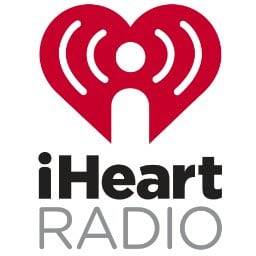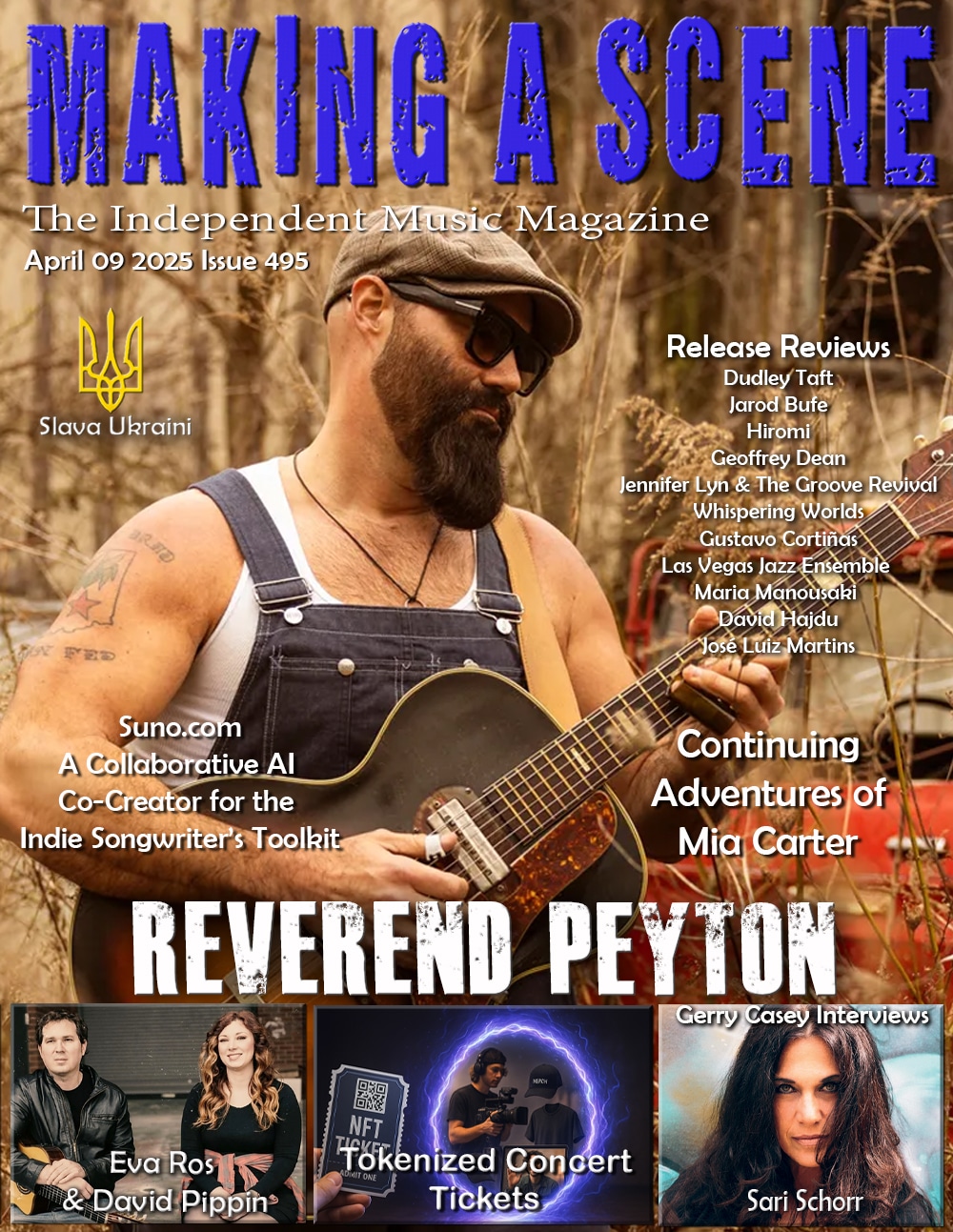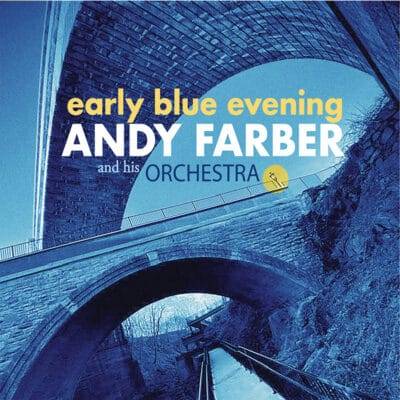Andy Farber and his Orchestra Early Blue Evening
Early Blue Evening
ArtistShare
Saxophonist, arranger, composer and bandleader Andy Farber issues his fourth album as a leader and second big band effort with Early Blue Evening. His is a 17-piece band that digs back to the original big bands and infuses those sounds with a more contemporary language. The swing and blues that you associate with the golden era of big bands is on display throughout these nine originals and two Farber-arranged standards. The leader plays alto, tenor, and baritone sax and leads a reed section that features the full array from flute to clarinet to bass clarinet to the usual saxophones. Five trumpeters, four trombonists and a rhythm section of piano, guitar, bass, and drums form the core of the orchestra, tracing back to their nearly 300 performances together as the on-stage band for After Midnight. That Broadway revue presented Jazz Age nightclub fare with music from Ellington, Jimmy McHugh and others. This is that band’s first recording since the 2014 closing of the production. The rhythm section that anchors the larger aggregation is Adam Birnbaum (piano), Jennifer Vincent (bass), Alvester Garnett (drums), and James Chirillo (guitar).
The opening “Don’t Tell Me What To Do” is a straight ahead blues, with a vintage aura, communicated most notably by Dan Block’s clarinet solo. Will Friedwald’s descriptions in the liners and a detailed list of soloists by piece provide all the detail one needs to delve into this sumptuous offering. Yet as Farber straddles the traditional and new, the second composition, “Feet and Frames” is distinctly more complex and less reliant on repetitive themes, moving more into exploratory directions though strains of Ellington can be found as well. “The Holidaymakers” brings in some of Ellington’s Afro-Caribbean flair while “Aircheck,” like the opener, is a more conventional blues, with a gutty tenor solo from Lance Bryant. The title track is a sweeping piece featuring altoist Godwin Louis, suggesting comparison to Benny Carter, who famously played in both the Ellington and Basie bands, among others. Just as the title track evoked Benny Carter, “Symphony for Dr. T” calls out another fixture in the bands of Ellington and Basie, trumpeter Clark Terry. Brian Pareschi delivers his swinging flugelhorn solo in Terry’s style.
“Fanfare on Fairfax,” named after an L. A. street, has a West Coast flair and requisite cinematic quality, imbued by Carl Maraghi’s Gerry Mulligan-like swinging baritone solo combined with Chirillo’s electric guitar create a stirring drama that threatens to explode as the woodwinds and brass keep building, sparked by the Godwin alto solo that increases the tempo and intensity. Following Birnbaum’s piano intro and the ensemble state them, “Cork Grease and Valve Oil” becomes a bluesy vehicle for the leader’s tenor and Harris ‘muted trumpet solos, respectively. It too reads Ellington, as if a long prelude to the quintessential “Portrait of Joe Temperley,” a solemn tribute to the baritone saxophonist who played in later iterations of Ellington’s band, having replaced Harry Carney in 1974. Temperley also played in the first incarnation of the Jazz at Lincoln Center Orchestra. Farber’s playing here is inspired in part by Temperley’s most noted solo on “Single Petal of a Rose,” the melodic Ellington ballad that was part of The Queen’s Suite, a work Strayhorn famously composed with Duke in 1958 for an audience of one: Queen Elizabeth II. Farber’s heartfelt solo takes on even more gravitas considering that he plays it on the late Temperley’s actual baritone saxophone.
The two covers appear at the end of the program. “Theme from the Odd Couple,” composed by Basie’s longtime co-writer Neal Hefti, is a tribute to the writer and features a swinging, bluesy solo from Birnbaum while Farber’s energetic alto and the large ensemble brightly animate the familiar theme music. The clincher comes as the closer with the renowned vocalist Catherine Russell, steps in for the Parker and King standard, “How Am I to Know.” Russell, arguably today’s best vocalist in these vintage era tunes, gets plenty of space to showcase her superior phrasing and use of dynamics, yielding to Farber’s tenor and James Zollar’s trumpet statements that serve to color the traditional vibe.
While Friedwald in his liners is hyperbolic, perhaps to a fault, this is unequivocally top shelf big band material. That it appears on the label, ArtistShare, today’s premier label for large ensemble projects such as those from Maria Schneider, Brian Lynch, and Gil Evans, among others, only enhances its credibility.
{Note: All band members are mentioned except; Alphonso Horne (trumpet, trks 1,3,5,6), Shawn Edmonds (trumpet, trks. 2,4,7-11), and trombonists Wayne Goodman, Art Baron, and Dion Tucker.}
- Jim Hynes
Buy Us a Cup of Coffee!
Join the movement in supporting Making a Scene, the premier independent resource for both emerging musicians and the dedicated fans who champion them.
We showcase this vibrant community that celebrates the raw talent and creative spirit driving the music industry forward. From insightful articles and in-depth interviews to exclusive content and insider tips, Making a Scene empowers artists to thrive and fans to discover their next favorite sound.
Together, let’s amplify the voices of independent musicians and forge unforgettable connections through the power of music
Make a one-time donation
Make a monthly donation
Make a yearly donation
Buy us a cup of Coffee!
Or enter a custom amount
Your contribution is appreciated.
Your contribution is appreciated.
Your contribution is appreciated.
DonateDonate monthlyDonate yearlyYou can donate directly through Paypal!
Subscribe to Our Newsletter
 |  Spotify |  Deezer | Breaker |
 Pocket Cast |  Radio Public |  Stitcher |  TuneIn |
 IHeart Radio |  Mixcloud |  PlayerFM |  Amazon |
 Jiosaavn |  Gaana | Vurbl |  Audius |
Reason.Fm | |||
Find our Podcasts on these outlets
Discover more from Making A Scene!
Subscribe to get the latest posts sent to your email.















































